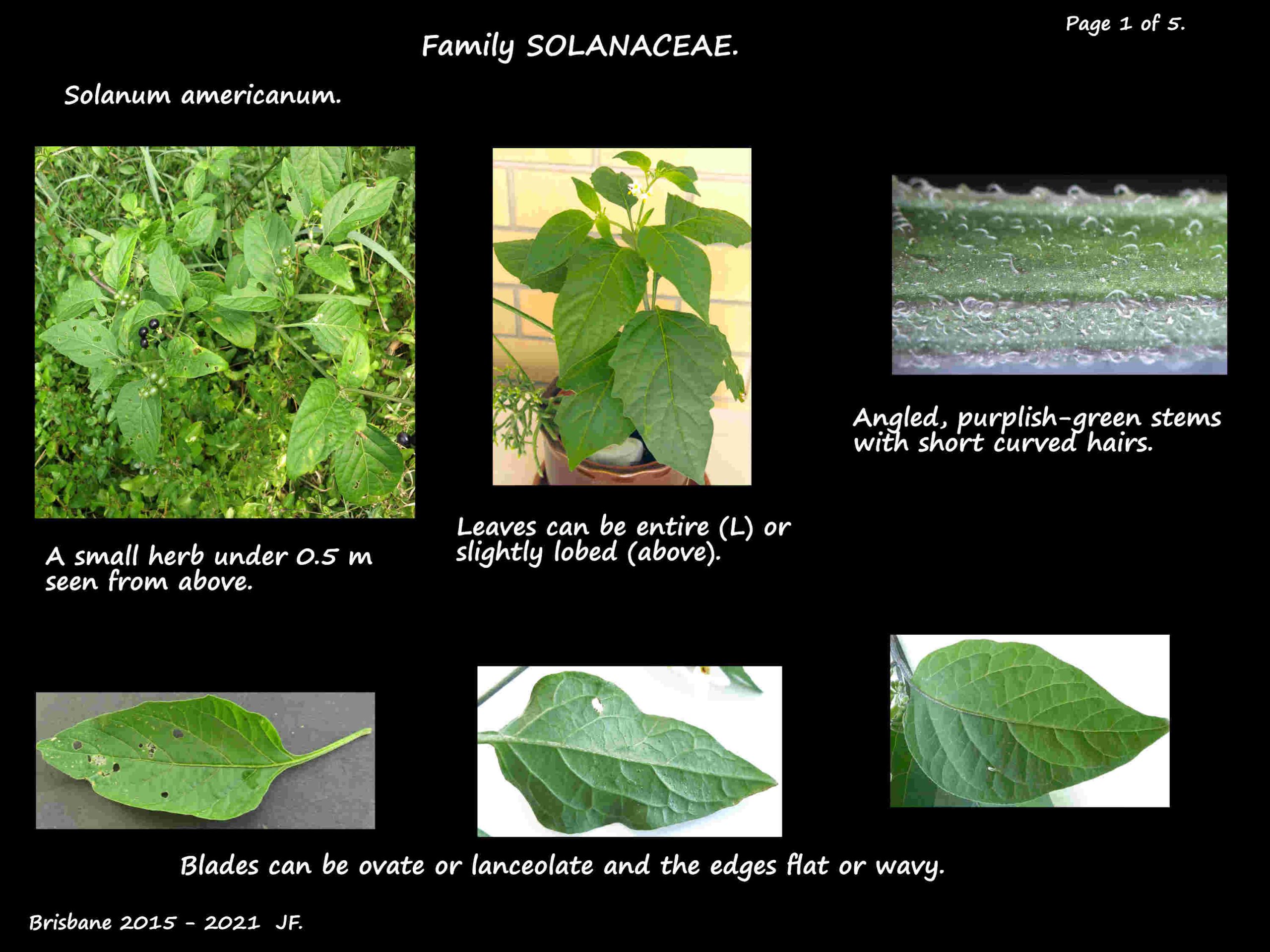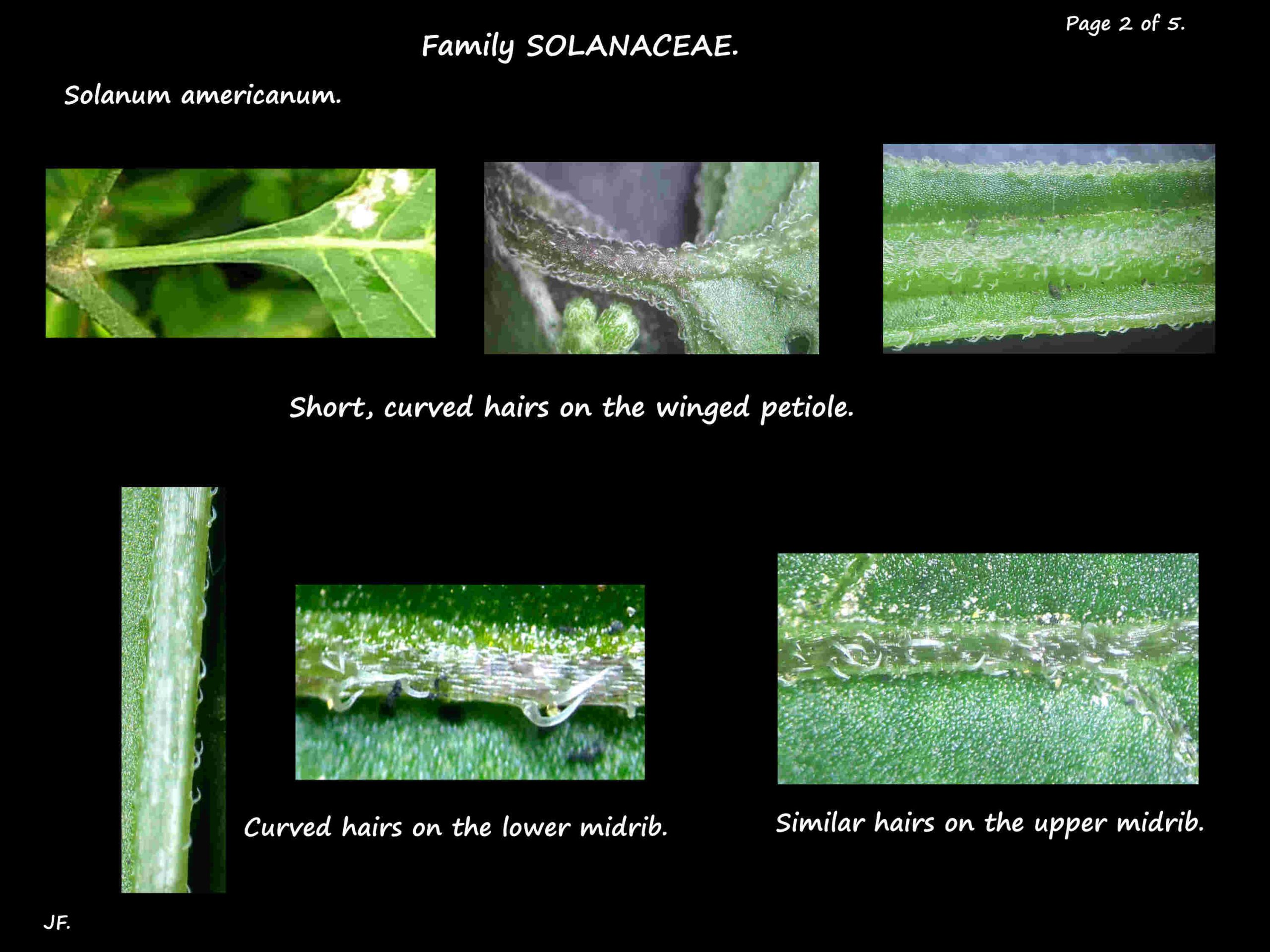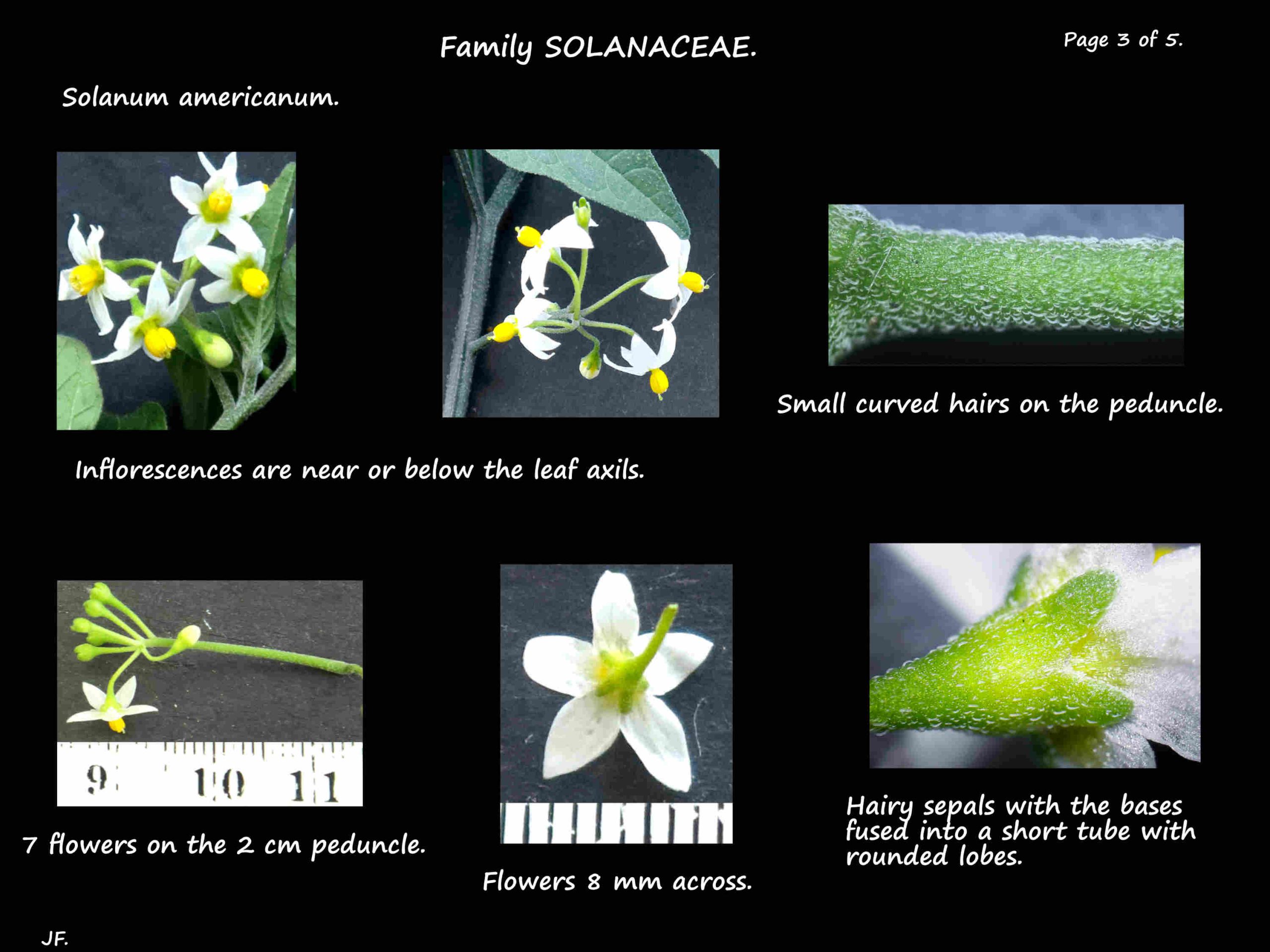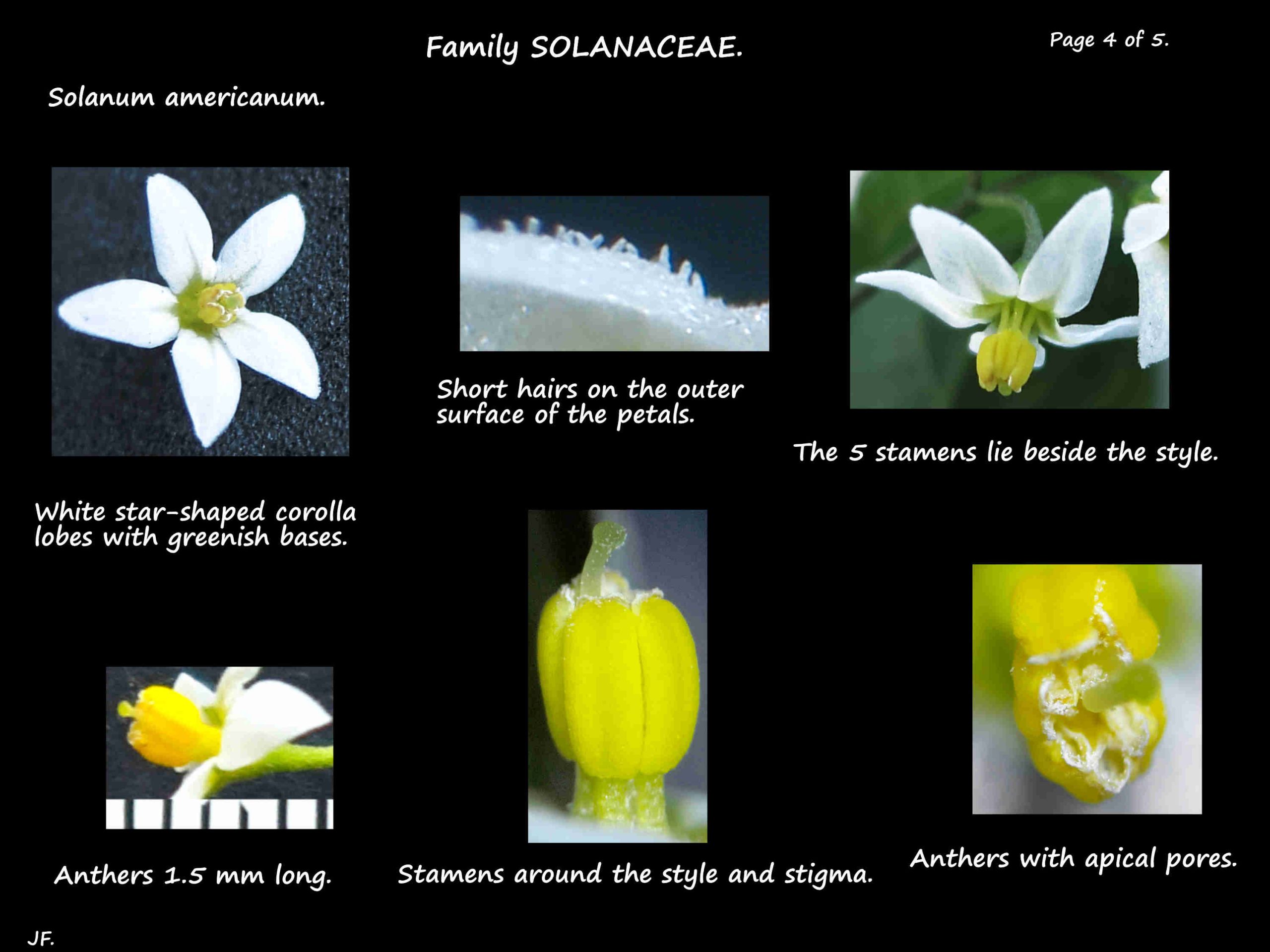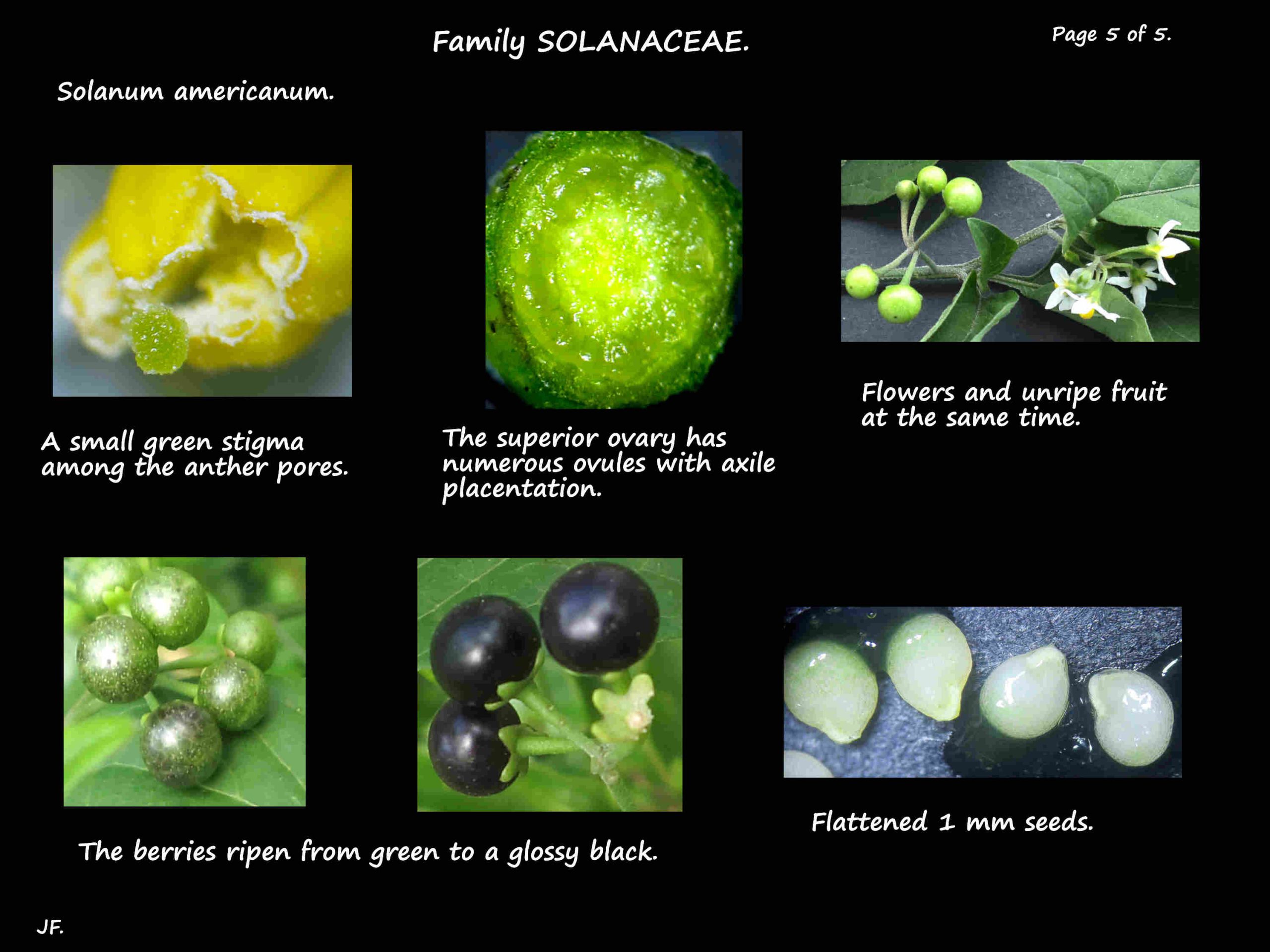Solanum americanum.
Family Solanaceae.
There are a number of Black nightshades found in S. E. Queensland.
Their stems and leaves may have some hairs but these are never stellate.
They have no prickles, similar white flowers in umbel-like arrangements and black or green globular berries.
Included in the group are S. nigrum (Glossy nightshade) and S. americanum (Blackberry nightshade).
These are both very variable species and plants, possibly hybrids, are seen with a mix of characteristics between the two.
Some regard them as separate species while others say they are the same.
Both have many synonyms and subspecies are described.
Descriptions of them from various sources also differ.
Taken as separate species the main differentiating feature seem to be the glossy fruit in S. americanum.
Solanum americanum, the Glossy Nightshade has a long list of synonyms.
Found in Queensland it is uncertain whether it is an Australian native or not.
They are annual or perennial herbs or shrubs from 0.5 to 1 (2) m high.
The green or purplish stems are angled or have narrow wings.
Some simple hairs may be present but there are no stellate hairs or prickles.
When present hairs are short, curved and without glands.
The alternate leaves, on petioles, are lanceolate or ovate and are variable in size.
They can be 2 to 10 cm long and 2 to 7 cm wide.
The edge can be entire or have shallow lobes and is sometimes wavy.
There may be a few simple hairs.
Inflorescences have with up to 12 or more flowers on a 1 to 2 cm long peduncle.
Flowers, under 5 mm across, are on stalks around 6 mm long.
Parts are in 5’s with the sepals and petals both having their bases fused into short tubes.
The sepals are 1 to 2 mm long with rounded lobes and the corolla has longer lobes.
The corolla is usually 8 to 9 mm across (other descriptions say 2 mm, 3 to 6 mm and under 5 mm).
The white petals have a greenish base and sometimes a light purple tinge.
The yellow anthers, up to 1.5 mm long lie alongside the 3 mm style.
The fruit are shiny, globular berries around 7 mm across.
As the fruit develop the peduncle elongates and can be up to 3 or 4 cm long.
Fruit mature from green to a purplish-black and the calyx lobes bend backwards.
Each berry has numerous 1 mm, flattened pale brown seeds.
Solanum nigrum.
The Blackberry nightshade, naturalised in all Australian states, is a weed.
Plants are very variable with numerous subspecies, forms and hybrids described.
Some people include all these in a Solanum nigrum complex.
There is also confusion regarding its relationship to S. americanum.
Both these species are in the Black nightshade group.
They are herbs commonly around 0.5 m high but can become small shrubs up to 1 m.
The green or purplish stems can be round or angled.
They have simple hairs but no prickles.
The alternate leaves are on winged petioles around 2 cm long.
The ovate to heart-shaped blades are up to 8 cm long.
The edge is variable and can be flat or wavy, entire or with large, shallow lobes.
The surfaces can be smooth or have some simple curved hairs.
Inflorescences are mostly below the leaves but can be almost opposite.
They are umbels with a stalk or peduncle 1 to 2 cm long.
From the top of this radiate up to 12 flowers on pedicels under 1 cm long.
The star-shaped flowers are around 1 cm across (7 to 12 mm).
There are 5 green sepals, around 2 mm long.
The bases form a short tube with pointed lobes.
The petals, with fused bases and flaring lobes, alternate with the sepals.
They are white with greenish bases.
There are short hairs on the outer surfaces of the sepals and petals.
The stamens, around 2.5 mm long, are opposite the sepals.
They are erect with the bright yellow anthers lying beside the style.
Anthers open via apical pores.
The superior ovary has a single style with the small stigma held above the anthers.
The fruit are globular berries around 8 mm across.
They ripen from green to a dull black or purplish-black.
(Other descriptions seen are ‘dull or shiny’ and ‘usually very glossy’.)
Each berry has numerous pale to darker brown, flattened seeds around 2 mm long.
J.F.

